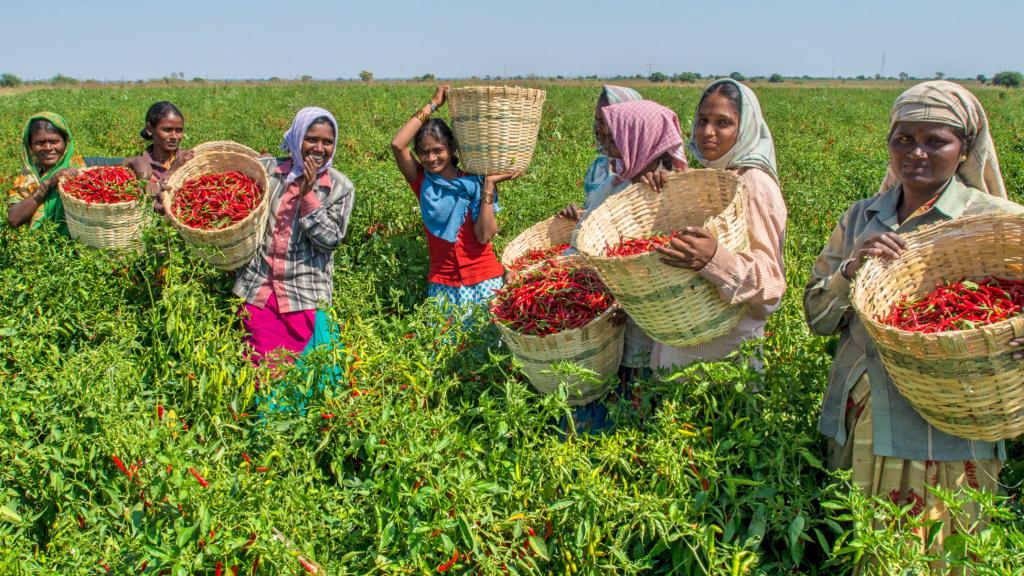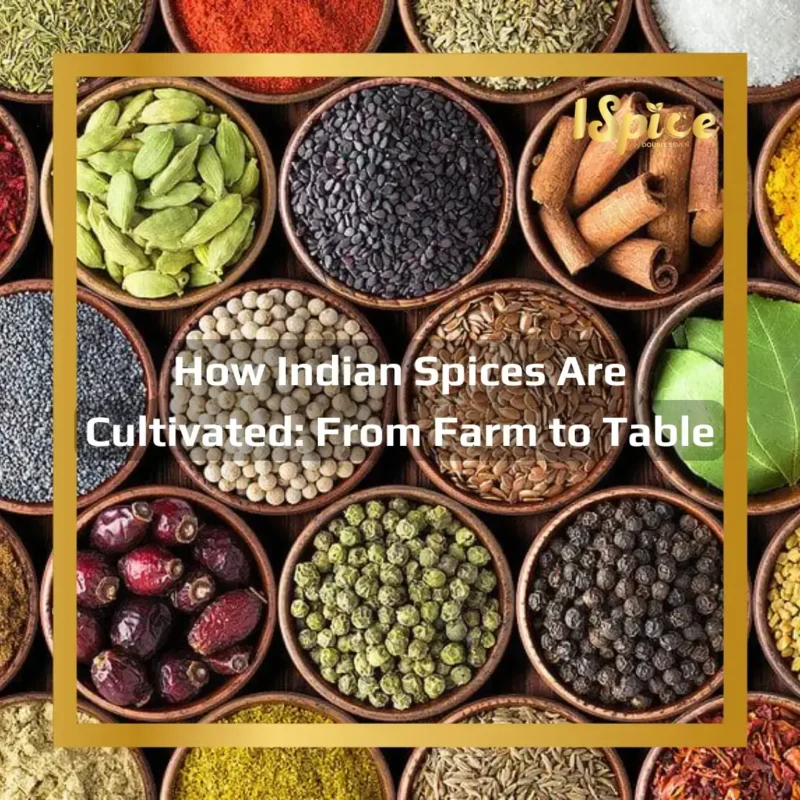How Indian Spices Are Cultivated: From Farm to Table
In the vibrant tapestry of Indian cuisine, spices are the threads that weave together flavors, aromas, and cultures. From the fiery notes of red chili to the earthy whispers of turmeric, these culinary treasures do more than simply season our food; they tell stories of the land, the climate, and the enduring spirit of those who cultivate them. But have you ever paused to consider the journey these spices embark upon, from the sun-kissed fields where they are lovingly nurtured to the bustling kitchens where they awaken our senses? This article delves into the fascinating process of spice cultivation in India—exploring the intricate techniques, traditional wisdom, and agricultural diversity that shape each spice’s unique path from farm to table. Join us as we unravel the rich narrative behind these essential ingredients, celebrating the farmers, processes, and heritage that bring the essence of India into our homes.

Understanding the Spice Lifecycle from Soil to Plate
Every spice begins its journey deep within the rich, nutrient-laden soils of India, where the vibrant landscape supports the cultivation of a plethora of aromatic herbs. Farmers, often following traditional farming methods passed down through generations, engage in the painstaking process of planting seeds, nurturing them with care, and ensuring they thrive in their natural environment. Indian spices, renowned for their distinct flavors and health benefits, are cultivated in various regions, including Kerala, a hub for top Indian spices exporters. The meticulous attention to detail not only helps in producing high-quality spices but also establishes a strong foundation for bulk spice suppliers, who aim to meet international demand.
As the spices mature, they undergo a transformation, where each leaf, flower, and fruit is harvested at the right time to capture the essence of their flavors. After collection, the spices are dried, processed, and packaged, often adhering to stringent quality protocols set forth by bulk spice distributors for restaurants and other buyers. This entire lifecycle ensures that by the time they reach the consumer’s plate, these aromatic ingredients are not only fresh and flavorful but also promote authenticity. By emphasizing the importance of quality control and sustainable practices, iSpice, a leading wholesale spices supplier, effectively bridges the gap between farm and table, delivering premium export-quality products to the global market.
Traditional Farming Practices That Nourish Indian Spices
The cultivation of Indian spices is steeped in a legacy of traditional farming practices that have been passed down through generations. Farmers across the lush landscapes of Kerala employ sustainable methods to grow some of the most coveted spices in the world. By using natural fertilizers, rotating crops, and employing organic pest control, these farmers ensure that the spices are not only rich in flavor but also environmentally friendly. This meticulous care in cultivation is what sets the products from major bulk spice suppliers, like iSpice, apart in the crowded marketplace. The rich biodiversity in these regions enhances the quality of spices such as cardamom, pepper, and cinnamon, making them favorites among wholesale spices suppliers and bulk spice distributors for restaurants.
Moreover, the commitment to traditional farming techniques is evident in the ways spices are harvested and processed. Tools made from locally-sourced materials and handpicking methods help preserve the integrity and aroma of the spices. The drying processes, often carried out under the sun, infuse each spice with distinct flavors that resonate with authenticity. This emphasis on quality and sustainability not only bolsters the reputation of suppliers but also assures buyers around the globe of the premium nature of their products, especially from top Indian spices exporters like iSpice. As these spices make their journey from farm to table, they encapsulate the culture and dedication of Indian farmers, ensuring that every pinch delivers the essence of India’s rich agricultural heritage.
Sustainable Cultivation Techniques for Future-Ready Spice Farming
To ensure a future-ready approach in spice farming, sustainability has become a pivotal focus for producers, particularly for those aspiring to be recognized as top Indian spices exporter like iSpice. Employing techniques such as crop rotation, intercropping, and organic farming helps in enhancing soil fertility while minimizing the need for chemical fertilizers. By practicing these methods, farmers not only protect the integrity of the land but also enhance the flavor and aroma profile of their spices, crucial for a bulk spice supplier aiming for premium quality. For instance, integrating companion planting of spices such as turmeric alongside legumes can fix nitrogen in the soil, yielding healthier crops that command higher prices in the international market.
Moreover, water management plays a crucial role in sustainable cultivation practices. Techniques such as rainwater harvesting and drip irrigation ensure that water resources are utilized efficiently, thereby reducing wastage. This resonates well with the ethos of wholesale spices supplier like iSpice, focusing on quality over quantity. The adoption of these innovative practices attracts bulk spice distributors for restaurants and food processing companies who recognize the importance of sourcing from environmentally responsible producers. By embracing these sustainable methodologies, iSpice not only reinforces its commitment to quality but also positions itself as a reliable partner in the global spice trade, ensuring that Indian spices maintain their revered status worldwide.

From Harvest to Market: The Journey of Spices and Expert Tips for Consumers
Understanding the journey of Indian spices from farm to market can deepen your appreciation for their rich flavors and diverse uses. Spices are typically planted in carefully tended fields, where optimal conditions of temperature, humidity, and soil quality govern their growth. Many farmers in India practice sustainable farming methods, refreshing the soil with organic fertilizers to enhance the quality of their produce. Once matured, these spices are harvested by hand, ensuring that only the best specimens make it to the next stage. As a top Indian spices exporter, iSpice prides itself on sourcing spices directly from local farmers, guaranteeing freshness and authenticity in every product.
After the harvest, the spices undergo a meticulous cleaning and drying process before being packaged for distribution. This is where iSpice shines as a bulk spice supplier and wholesale spices supplier, providing varied packaging options that cater to the needs of different markets. Whether you’re a restaurant owner looking for bulk spice distributors or a trader in search of quality spices for resale, iSpice ensures you receive premium products every time. Consider the following essential tips when selecting your spices:
- Opt for whole spices as they retain more flavor over time.
- Check for proper certifications if purchasing in bulk.
- Always verify the sourcing practices of your supplier for authenticity.
Wrapping Up
As we journey through the vibrant tapestry of Indian spices, from the sun-kissed fields to the bustling kitchens, it becomes clear that these aromatic treasures are far more than just flavor enhancers. They carry with them the stories of farmers who rise with the dawn, tending to the land with care and tradition, and the artisans who skillfully transform raw ingredients into culinary masterpieces. Understanding the cultivation process sheds light on the intricate relationship between nature and culture, highlighting the dedication required to bring these spices from farm to table. Each sprinkle of turmeric, dash of cumin, or pinch of cardamom is a testament to the rich heritage of Indian agriculture, echoing the labor and love embedded within every grain. As you savor the myriad flavors that spices impart to your dishes, take a moment to appreciate the journey they undertook to reach your plate. The next time you use these exquisite spices, remember that with each bite, you’re not just enjoying a meal; you’re partaking in a centuries-old tradition that reflects the heart and soul of India. So, let your culinary adventure continue, inspired by the depth of flavors and the stories behind every spice.


